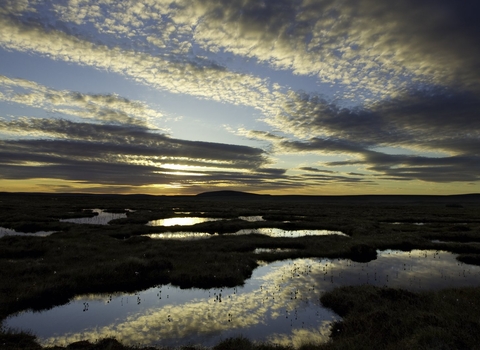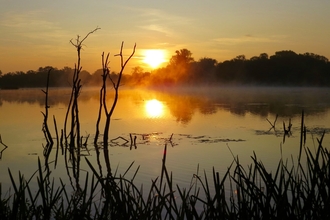What are bogs?
Bogs are extremely wet places that can also be called mires, marshes or swamps. The soil in these areas is very dark and known as peat. Peat holds so much water that it actually has fewer solids than milk, meaning it’s very easy to lose a wellie in!

Peter Cairns/2020VISION
Peat is created very slowly: around 1mm a year! It is made up of dead material that decays really slowly, and this means it holds an amazing amount of information. The layers in a lump of peat from a thousand years ago can tell an expert a whole lot. This includes what kind of plants and insects were living at the time, to whether a volcano had just erupted in Iceland!
Who lives on a bog?
Because bogs are so wet very few things are happy to live on them. In order to survive many of our plants have to think of clever ways to get by. Carnivorous plants make up for the lack of nutrients in the soil by munching on insects instead. Sundews have sticky leaves which the insects can’t escape from.
Types of bogs
There are lots of different kinds of bogs. In the UK we have lots of blanket bogs. Globally they are very rare but with our wet climate, they cover many areas across northern England, Scotland, Wales and Ireland. The UK also had many lowland raised bogs. Unfortunately many have been destroyed as they were cut up for peat for gardening or the water was drained off of them to try to make them better for farming.

Peat bog by Mark Hamblin/2020VISION
How you can help
Today lots of work is going into restoring bogs, as they are incredibly important for wildlife, but also for helping us fight climate change as they store lots of carbon. One of the important things we can do to help is not buying peat compost for our gardens. Digging up peat from bogs means we lose all the amazing animals that live on them like dragonflies and hen harriers.








